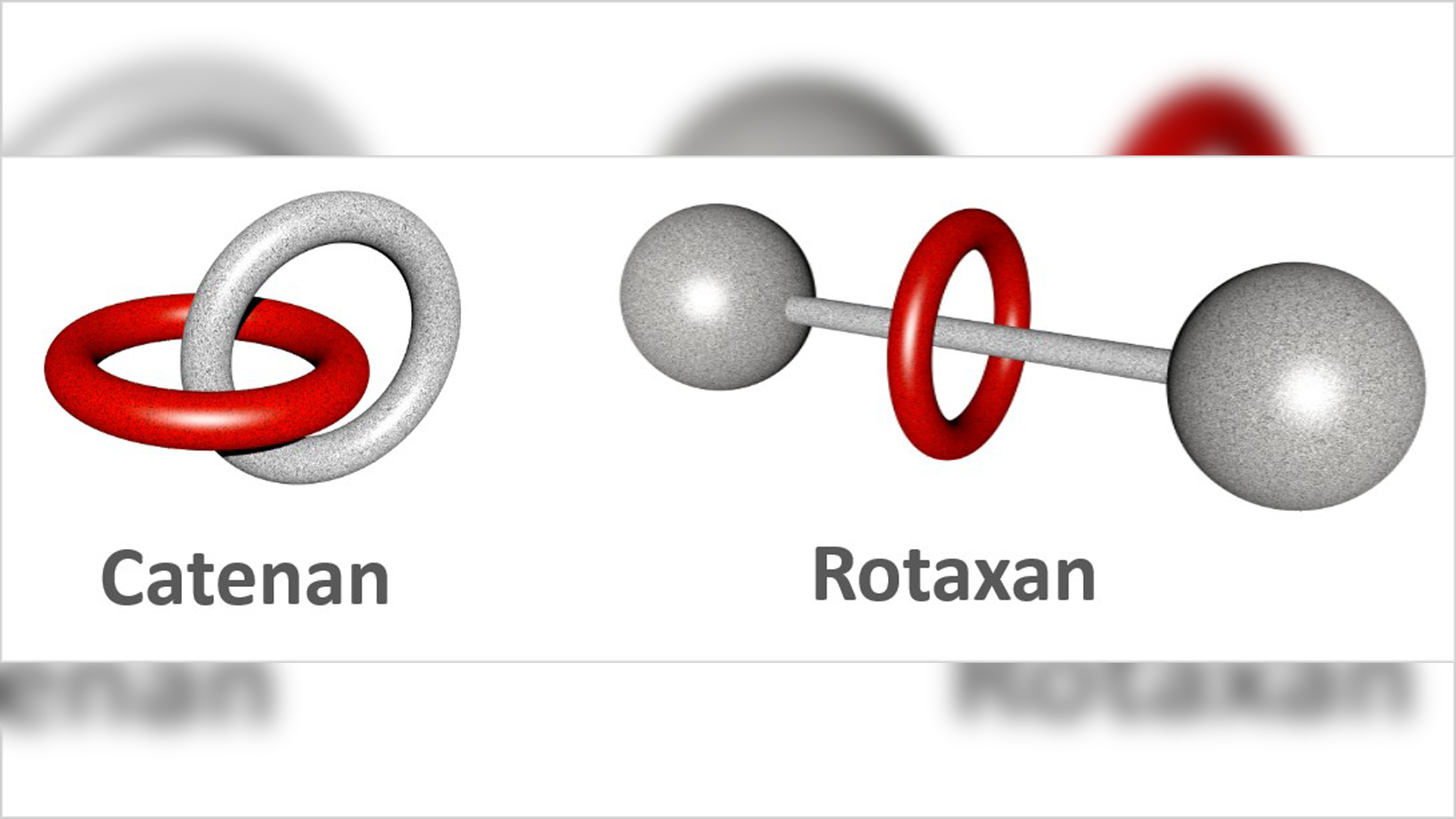
Interlocked Molecules Provide High Product Selectivity
Entangled Catalysts
- von Birte Vierjahn
- 25.09.2020
They are inseparable, but not rigidly connected: Mechanically interlocked molecular architectures have only recently been discovered. They can look like two connected chain links or a ring on an axis closed on both sides, for example. Chemists from the Center for Nanointegration (CENIDE) at the University of Duisburg-Essen (UDE) have now successfully tested them as cooperative catalysts for the first time. Two renowned trade journals have reported on this.
Nowadays, more than 90 percent of all chemical products are obtained by using catalysts. The development of new catalytically active systems is therefore a highly topical field of research. One particularly promising approach is cooperative catalysis, a process in which two active units work together to manage a reaction.
The team of PD Dr. Jochen Niemeyer from Organic Chemistry has now investigated the value of interlocked molecules for this application for the first time. It was not until 2016 that the Nobel Prize in Chemistry was awarded for the production of such highly complex molecules.
Niemeyer's group produced catenanes (chain links) and rotaxanes (ring on axis) and placed active centers on both components. It turned out that this arrangement was ideal for cooperative catalysis: The components can actively adapt during the reaction and position their active centers in the best possible way. "Like a wrench that adjusts itself," Niemeyer puts it.
Pure Products by Active Adaptation
Catenanes and rotaxanes both exhibited high product selectivity, which is not the case without the interwoven structure – a decisive advantage for sectors such as the pharmaceutical industry. "Because this means that the result is a single, pure product, not a mixture," the chemist explains.
Theoretical and spectroscopic studies in cooperation with the working groups of Prof. Stefan Grimme from Bonn and Prof. Ruth Gschwind from Regensburg confirmed the cooperative behavior. The results of these studies were published in two scientific articles in "Angewandte Chemie International Edition" and "Chemical Science".
Niemeyer's group now wants to investigate whether and how interlocked molecules with several active centers can be used to potentially realize various reactions with a single catalyst material to obtain different but highly pure products.
Image:
Schematic representation of the interlocked molecules. Due to the flexible connection of the two components, the shape of the active center can adapt during the reaction.
Original Publications:
N. Pairault, H. Zhu, D. Jansen, A. Huber, C.G. Daniliuc, S. Grimme, J. Niemeyer
“Heterobifunctional Rotaxanes for Asymmetric Catalysis”
Angew. Chem. Int. Ed. 2020, 59, 5102 –5107
https://doi.org/10.1002/anie.201913781
D. Jansen, J. Gramüller, F. Niemeyer, T. Schaller, M.C. Letzel, S. Grimme, H. Zhu, R.M. Gschwind, J. Niemeyer
„What is the role of acid–acid interactions in asymmetric phosphoric acid organocatalysis? A detailed mechanistic study using interlocked and non-interlocked catalysts“
Chem. Sci. 2020, 11, 4381-4390
https://doi.org/10.1039/D0SC01026J
Further Information:
PD Dr. Jochen Niemeyer, Organic Chemistry, +49 201/18 3-3148, jochen.niemeyer@uni-due.de
Editor: Birte Vierjahn, +49 203/37 9-8176, birte.vierjahn@uni-due.de
